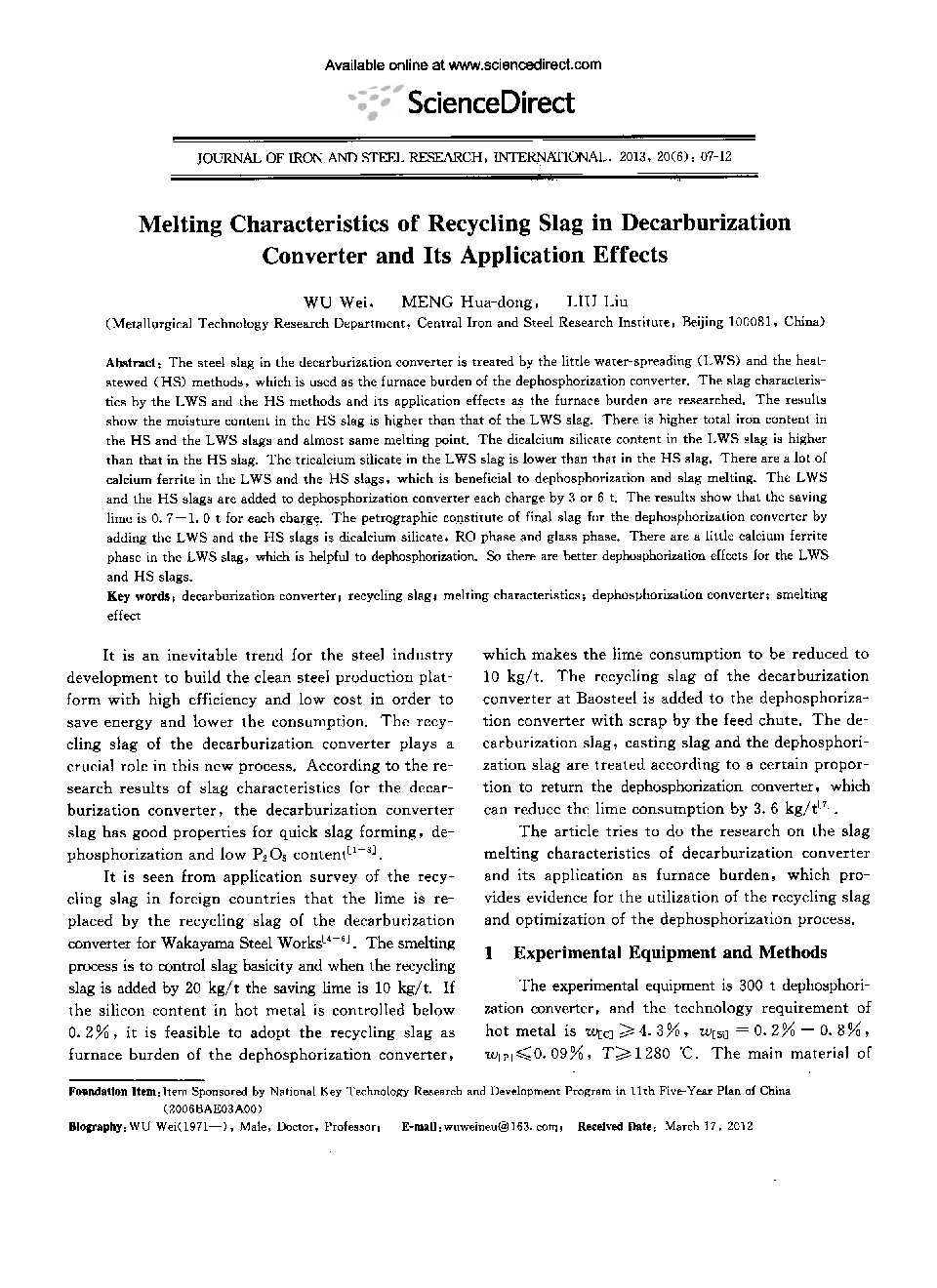| Article ID | Journal | Published Year | Pages | File Type |
|---|---|---|---|---|
| 1628868 | Journal of Iron and Steel Research, International | 2013 | 6 Pages |
The steel slag in the decarburization converter is treated by the little water-spreading (LWS) and the heat-stewed (HS) methods, which is used as the furnace burden of the dephosphorization converter. The slag characteristics by the LWS and the HS methods and its application effects as the furnace burden are researched. The results show the moisture content in the HS slag is higher than that of the LWS slag. There is higher total iron content in the HS and the LWS slags and almost same melting point. The dicalcium silicate content in the LWS slag is higher than that in the HS slag. The tricalcium silicate in the LWS slag is lower than that in the HS slag. There are a lot of calcium ferrite in the LWS and the HS slags, which is beneficial to dephosphorization and slag melting. The LWS and the HS slags are added to dephosphorization converter each charge by 3 or 6 t. The results show that the saving lime is 0.7—1.0 t for each charge. The petrographic constitute of final slag for the dephosphorization converter by adding the LWS and the HS slags is dicalcium silicate, RO phase and glass phase. There are a little calcium ferrite phase in the LWS slag, which is helpful to dephosphorization. So there are better dephosphorization effects for the LWS and HS slags.
